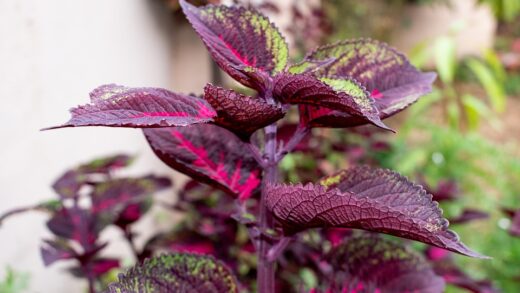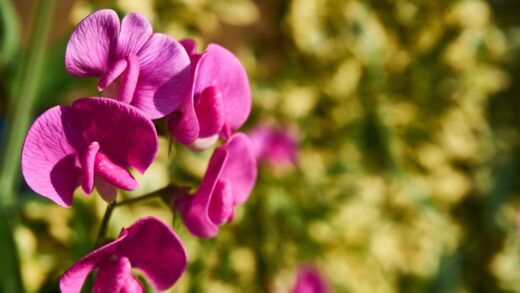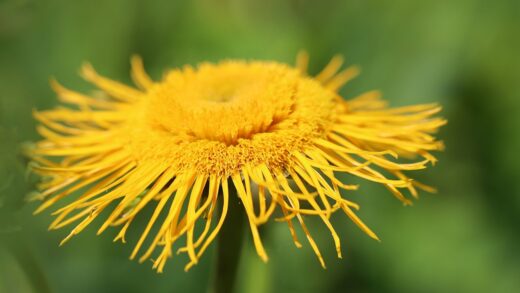Successfully establishing weigela in the garden begins with proper planting techniques, which create the foundation for a healthy and vigorous shrub. This process involves more than simply digging a hole; it requires careful consideration of timing, site selection, and soil preparation to ensure the plant’s roots can quickly acclimate and support robust growth. Similarly, understanding the methods of propagation allows gardeners to multiply their stock, creating new plants from an existing favorite to expand their garden or share with others. Mastering both planting and propagation is a rewarding endeavor that ensures the long-term success and proliferation of this beautiful flowering shrub.
The initial act of planting is a critical moment in the life of a weigela, setting the stage for its future performance in the landscape. A well-planted shrub will establish its root system more efficiently, making it more resilient to environmental stresses such as drought and temperature fluctuations. This involves preparing a planting hole that is sufficiently wide and deep, amending the soil to create an ideal growing medium, and carefully positioning the plant to the correct depth. Each of these steps contributes significantly to the plant’s ability to thrive from day one.
Propagation, the art and science of creating new plants, offers a sustainable way to increase the number of weigela in a garden without additional cost. Weigela is particularly amenable to vegetative propagation from cuttings, a method that produces a new plant genetically identical to the parent. This ensures that the desirable characteristics of a specific cultivar, such as its flower color or foliage type, are faithfully reproduced. Learning these techniques empowers a gardener to cultivate a more abundant and personalized outdoor space.
This article provides a detailed, step-by-step guide to both planting a new weigela and propagating it from cuttings. By following these professional guidelines, gardeners can approach these tasks with confidence, avoiding common pitfalls that can hinder a plant’s development. From selecting the right time of year to providing aftercare for newly rooted cuttings, the information presented here covers the complete process, enabling anyone to successfully plant and multiply these versatile and attractive shrubs.
Choosing the right time to plant
The timing of planting is a crucial factor that significantly influences the successful establishment of a weigela shrub. The two most opportune periods for planting are in the spring, after the last frost has passed, and in the autumn, at least six to eight weeks before the ground freezes solid. Both seasons offer moderate temperatures and reliable rainfall, which reduce transplant shock and allow the plant to establish its root system in a less stressful environment. Choosing between these two windows often depends on regional climate and gardener preference.
More articles on this topic
Planting in the spring allows the weigela to utilize the entire growing season to develop a robust root system before facing the challenges of winter. This is often the preferred time in colder climates where winters can be harsh, as it gives the plant the maximum amount of time to acclimate and harden off. When planting in spring, it is essential to wait until the soil is workable and the threat of a hard freeze is over, as tender new growth can be easily damaged by late frosts.
Conversely, autumn planting has its own set of advantages, particularly in regions with hot summers or milder winters. Planting in the cooler temperatures of fall reduces the water stress on the new transplant, and the warm soil encourages rapid root growth. By the time the following spring arrives, the autumn-planted weigela will have a well-established root system, giving it a head start on growth and flowering compared to a spring-planted counterpart. The key is to plant early enough to allow for root establishment before dormancy sets in.
The least favorable time to plant weigela is during the peak of summer. The combination of high temperatures and intense sunlight puts immense stress on a newly transplanted shrub, significantly increasing its water requirements and the risk of failure. If summer planting is unavoidable, it should be done on a cool, overcast day, and meticulous attention must be paid to providing consistent and deep watering until the plant shows signs of new growth and establishment.
Step-by-step planting guide
Proper execution of the planting process is vital for the long-term health of your weigela. The first step is to prepare the planting hole, which should be dug two to three times as wide as the plant’s root ball but no deeper. The width of the hole is important as it allows the roots to spread out into loosened soil, encouraging rapid establishment. Digging the hole deeper than the root ball can cause the plant to settle over time, leading to it being planted too deep, which can suffocate the roots.
More articles on this topic
Before placing the plant in the hole, carefully remove it from its nursery container. If the plant is root-bound, with roots circling tightly within the pot, it is crucial to gently tease them apart or make a few vertical cuts through the outer layer of roots with a sharp knife. This action encourages the roots to grow outwards into the surrounding soil rather than continuing to circle, which can eventually girdle and kill the plant. This step is critical for ensuring the plant’s long-term stability and nutrient uptake.
Position the weigela in the center of the hole, ensuring that the top of the root ball is level with or slightly above the surrounding soil grade. Backfill the hole with the amended soil removed earlier, gently firming it around the root ball to eliminate any large air pockets. It is important not to compact the soil too much, as this can impede water and oxygen flow to the roots. Once the hole is filled, create a shallow basin or “water well” around the perimeter of the planting area to help direct water to the root zone.
The final and most critical step is to water the newly planted weigela thoroughly and deeply. This initial watering settles the soil around the roots and provides essential hydration to the plant, helping to mitigate transplant shock. Apply water slowly until the entire root zone is saturated. For the first few weeks after planting, the soil should be kept consistently moist but not waterlogged to support the development of new feeder roots.
Propagation through softwood cuttings
Propagating weigela from softwood cuttings is a highly effective and popular method for creating new plants, best performed in late spring or early summer. This is the period when the plant’s new growth is at the ideal stage of maturity—it has begun to firm up but still snaps when bent. To begin, select healthy, vigorous stems from the current season’s growth, avoiding any that are flowering or showing signs of stress or disease. The best cuttings are typically taken in the cool of the morning when the plant is fully turgid.
Using a sharp, sterile pair of pruning shears or a knife, take cuttings that are approximately 10 to 15 centimeters in length. Make the cut just below a leaf node, as this is where rooting hormones are concentrated. Once the cutting is taken, carefully remove the leaves from the lower half of the stem to reduce water loss through transpiration and to prevent them from rotting when inserted into the rooting medium. It can also be beneficial to make a small, shallow wound at the base of the cutting by slicing off a sliver of bark, which can further encourage root formation.
To enhance the success rate, dip the base of each cutting into a rooting hormone powder or gel. While weigela often roots without this aid, the hormone treatment can significantly speed up the process and lead to a more robust root system. Tap off any excess powder before proceeding to the next step. This simple application provides the hormonal signal needed to initiate root cell development at the base of the cutting.
Prepare a clean pot or tray filled with a sterile, well-draining rooting medium, such as a mix of perlite and peat moss or coarse sand. Insert the prepared cuttings into the medium, burying them about one-third to one-half of their length, and gently firm the medium around them. Water the medium thoroughly and cover the pot with a clear plastic bag or dome to create a humid environment. Place the cuttings in a warm location with bright, indirect light, and keep the medium consistently moist until roots have formed, which typically takes four to eight weeks.
The process of hardwood cutting propagation
An alternative method for propagating weigela is through hardwood cuttings, which are taken during the plant’s dormant season, from late autumn to late winter. This technique utilizes mature, woody stems from the previous season’s growth, offering a way to propagate plants when garden activity is typically lower. The process begins by selecting healthy, straight stems that are about the thickness of a pencil and cutting them into sections approximately 15 to 25 centimeters long. Each cutting should have at least two or three nodes.
The preparation of hardwood cuttings is slightly different from that of softwood cuttings. A straight cut should be made at the top of the cutting, just above a bud, and an angled cut should be made at the bottom, just below a bud. This differentiation helps in remembering which end is the bottom and should be planted downwards. As with softwood cuttings, wounding the base by removing a thin slice of bark on two sides can improve the chances of successful rooting.
Hardwood cuttings can be rooted directly in a prepared bed outdoors or in a deep pot filled with a well-draining medium. For outdoor rooting, choose a sheltered, well-drained spot and insert the cuttings into the soil so that about two-thirds of their length is buried, with at least one bud remaining above the soil line. For container rooting, a mix of sand and compost is suitable. The key is to ensure the medium remains slightly moist but not waterlogged throughout the winter and into the spring.
The development of roots on hardwood cuttings is a slow process that occurs over the winter and spring months. By the following summer, the cuttings should have developed a sufficient root system and begun to show signs of top growth. At this point, they can be carefully transplanted to their permanent locations in the garden or potted up individually to grow on for another season before being planted out. This method requires patience but is a very reliable way to produce a large number of new plants.
Care of newly planted and propagated weigela
The period immediately following planting or propagation is a critical time that determines the long-term success of the new weigela. For newly planted shrubs, the primary focus must be on providing consistent and adequate water to encourage the establishment of a strong root system. For the first growing season, it is essential to check the soil moisture every few days and provide a deep soaking whenever the top 5 centimeters of soil feel dry. This is far more effective than frequent, shallow watering, as it encourages roots to grow deeper into the soil.
Protecting the new plant from environmental stress is also paramount. A 5 to 7-centimeter layer of organic mulch should be applied around the base of the shrub to help retain soil moisture, regulate soil temperature, and prevent weed competition. In very hot and sunny climates, providing temporary shade during the hottest part of the day for the first couple of weeks can help reduce water loss and prevent wilting while the root system is still developing.
For newly propagated cuttings, aftercare begins once they have successfully rooted. The transition from a highly controlled, humid environment to the open garden can be a shock. Therefore, it is important to gradually acclimate, or “harden off,” the new plants over a period of one to two weeks. This is done by progressively exposing them to more direct sunlight and outdoor temperatures, bringing them indoors or into a protected area at night, until they are tough enough to be planted in their final location.
Once planted in the garden, young propagated weigela require similar care to larger nursery-bought plants, with an even greater emphasis on consistent moisture. Fertilization should be withheld until the young plants show clear signs of active new growth, at which point a very dilute, balanced liquid fertilizer can be applied. With careful attention to these initial care requirements, both newly planted and propagated weigela will establish quickly and grow into healthy, productive shrubs.


















